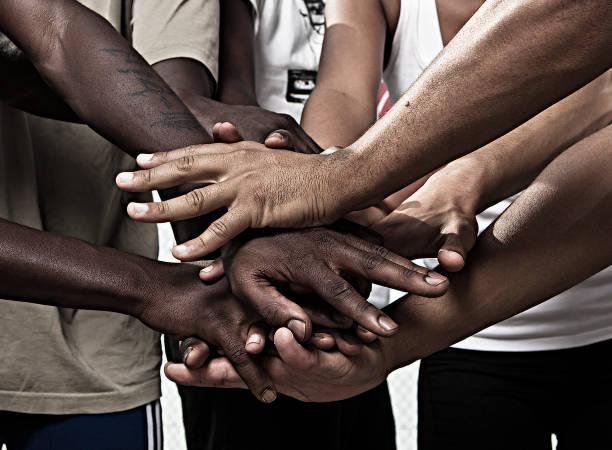Features
Decongestion in our prisons – a national emergency

The need to decongest our prisons has been on the radar of government and civil society organisations for quite a while. Some action has been taken but there is still much to be done with the advent of this terrible COVID-19 pandemic.
It has become much more urgent in view of the pandemic and the mode of transmission or infection, taking into account the current situation in our prisons. The prisons are extremely overcrowded.
According to the Ghana Business News of October 3, 2018, the overcrowding of the prisons was about 52 per cent. A TV news item I watched, shocked me to the core. Inmates were packed like sardines in a can and I wondered how on earth anyone can have a sound sleep under such circumstances.
The noncustodial sentencing being advocated by the general public, civil society organisations and the Prisons Council, must be given the required attention to prevent an outbreak of the pandemic in our prisons.
One of the protocols for prevention of the spread of the COVID-19 is social or physical distancing. The social distancing is not feasible under the current situation, where it is alleged that inmates are sometimes compelled to sleep in shifts and where they are able to sleep at the same time, they are packed like sardines.
The psychological impact on the inmates is a serious matter that must worry the authorities. These inmates are supposed to be reformed so they can fit into society on their release. If these inmates become angry at the society in general due to the unfair treatment being given them, would society be safe on their release?
Another aspect of this worrying situation is the possibility or should I say the likelihood of infection from the prison officers. These officers interact with fellow officers who interact with the general public on a daily basis and then they go on to interact with the prisoners. If any of the officers on duty gets infected, the chances of infecting the inmates would be quite high.
Given the impracticability of the social distancing in our prisons currently, we can only hope and pray for a miracle just like President Conte of Italy did when he was overwhelmed by the pandemic.
One peculiar aspect of this virus and a few others is that, someone could have the virus and still would not show any of the symptoms that would easily mark him out as an infected person. Given this scenario, an asymptomatic prison officer could spread the virus among the prisoners and a catastrophe will be on our hands.
In trying to implement noncustodial sentencing in our country, the culture of the people needs to be factored into the process; otherwise it would not have the desired effect. It would have to be a sentence that has the potential to bring shame to the family of the offender.
When that happens, it serves as a deterrent which is the main objective of any sentencing of a court of law. It must have an element that constitutes an affront or humiliation to the community in which the offender lives. For example instead of sending a young man who has stolen say a mobile phone to prison, he can be given a noncustodial sentence to sweep the main street of the community in which he lives for a specified period.
A prison dress could be given to him or her to wear when sweeping the street each morning to differentiate him or her from the normal sanitation workers whose duty is to ensure a clean environment. An information van can be dispatched to run commentary on the misbehaviour that has landed the offender in that trouble so everybody will know that the offender is doing the work for free as punishment for a criminal activity.
The stigma it could bring to the offender’s family will be enough deterrent to other families who would definitely admonish their family members to take a cue from the shame the offender has brought on his or her family.
There are reports of meagre sums of money used in feeding the inmates and therefore the lack of sufficient and quality food. The country has a lot of needs and this accounts for the lack of adequate resources needed to feed the prisoners. Noncustodial sentencing will reduce the amount released for taking care of the prisoners and resources will be made available to address other pressing social needs like shelter for abused mothers and children.
A hungry man, it is said, is an angry man and the negative social impact hunger can cause when inmates are released into society is huge, hence the need for noncustodial sentencing.
There are other diseases, like Meningitis, that is deadly and spreads through body contact. Recently, a variant of it has hit the Upper West Region, killing a lot of people. It is believed that the virus thrives in hot environments a description in which the current overcrowded prisons fits perfectly.
We are told by health personnel that the current virus responsible for these deaths is a new variant which no vaccine has been developed to combat. It is just like the COVID-19 and, therefore, it is being managed and the earlier the detection, the better the chances for survival of infected people.
One of the serious issues that can arise out of discontent in our prisons resulting from overcrowding is rioting. The state of preparedness to deal with riots in our prisons is yet to be determined.
It is not something that should be entertained since it can result in jail break which can have serious consequences on the lives of both inmates and that of the prison officers as well as their immediate families and even members of the surrounding communities. Anything therefore that can result in riot must be dealt with before it becomes an issue that impacts negatively on society.
Just imagine the mental torture of being restricted like a caged animal and then the further torture the inmates go through each night and you can have an idea of the rage being built up over time in the inmates towards society in general.
Recently, when the restriction was imposed due to the COVID-19, most people became restless even though we were in our own homes. Most people felt trapped and were counting the minutes and the hours till the restrictions were lifted, even though they could eat what they liked and do whatever they wanted; and this was for only a few weeks.
Consider an inmate, who is in a much more restricted environment, cannot eat whatever he likes, sleep in an overcrowded room and you would begin to appreciate the mental torture inmates go through.
In order to achieve the reformation objective of sentencing an offender, taking into account the lack of adequate resources, noncustodial sentencing is one sure way to go. Noncustodial sentencing would reduce government expenditure on prison inmates, free resources for other social intervention projects, achieve the reformation agenda in a cost effective manner, help in preventing the spread of infectious diseases such as COVID-19, help in promoting our human rights agenda as a nation and motivate our prison officers so they can effectively manage offenders that will be given custodial sentences.
Laud Kissi-Mensah, a social commentator
Features
The wonders of love…

A haircut I had about a week ago didn’t go down well with many. Someone quite close to my heart saw it, examined it critically and felt dizzy.
“What’s this?” she proceeded to ask me.
“An international hairdo,” I replied.
She was disgusted, in fact disappointed. The problem with the haircut is that the style is neither Punk, Tokyo Joe nor Show Your Back. If anything, it is a combination of all—and I liked it, for a change.
It was when I bounded downtown that someone called me and enquired whether I was no longer a journalist. He said I looked like a well-fed Warrant Officer.
“Class One or Class Two?” I asked.
Another studied my head as if he was studying physical geography and pronounced that I looked like a boxer who can throw dangerous punches. Still, someone was of the opinion that the haircut didn’t quite fit me, but admitted that I looked like a prosperous merchant.
Commendation
I remember some three months ago, I had a haircut that made two girls fall in love with me. In spite of the fact that the barber was not a graduate, the cut was such that they couldn’t help admiring it. One of them actually ‘checked out’ the style and commended the barber.
The other was more bent on the ‘love matter’ but I was too busy to give her any attention. LOVE!
I was reminded of this when I viewed a premier showing of the latest Sikaman film titled THE POWER OF LOVE. The film kept me thinking. Some of us have long forgotten about what it is like to be head-over-heels in love. When we were students, we had such experiences because there was nothing doing anyway.
We were either learning how stylishly to smoke ‘jot’ or how romantically to fall in love. Anyhow, I was intrigued by this latest movie because of the way love unlimited was portrayed on screen. It took my memory back many years to relive those youthful days when we felt we’d really die if jilted by our lovers.
The storyline of THE POWER OF LOVE is really an exciting one. The combination of love, treachery and intrigue made me feast my eyes intently on the screen, unbelieving the extent the force of love can reach.
Ama and Afua are good friends. But when it comes to matters of the heart, they have different tastes; Ama is content with only her boyfriend (a student) and Afua samples the bigwigs around town. Afua, not satisfied with the shots in town, wants Ama’s boyfriend Joe in addition. She lies to Joe that Ama has often been picked by a man on four-wheels, whereupon Joe dismisses Ama and takes on Afua.
Ama doesn’t realise that it is her best friend Afua who is destroying her relationship with Joe until she catches her having sex with him. She collapses and goes out of her mind from the broken heart. But before then, she had been made pregnant by Joe.
Having escaped from a psychiatric hospital, she roams town murmuring Joe’s name. Heavily pregnant now, she espies Joe boarding a mini bus and runs towards him. Joe, seeing her approaching, quickly disembarks and takes off.
Ama pursues him furiously, and he runs to his home where he finds his bosom friend Frank making love to Afua. He immediately realises the treachery of Afua who instigated him to leave Ama.
He intends leaving the home in disgust and meets mad Ama at the door and embraces her despite her madness. Instantly, she regains her sanity.
Love indeed heals the wounds of the mind and it is the greatest positive force in the world. Incidentally, the greatest negative force is hatred.
Greatest force
Now coming to talk about love, I reiterate it is the greatest force imaginable. That is why a man will butcher his rival to death if he catches him climbing his wife without asking permission; and a woman will go mad if jilted.
It is also for this reason that a young boy who is scared stiff of cemeteries and under normal circumstances would not dare go near one, will this time walk boldly through a cemetery at midnight if that is the only way to his lover’s abode.
The Bible describes love for our neighbours as the surest way to heaven: Love thy neighbour as thyself.
Unfortunately, what Ghanaians are more interested and skilful in is loving the opposite sex. Romance under the cover of darkness is what we understand love to be all about. When it comes to loving our fellow human beings, we are found wanting.
People hate others just because they are of another tribe and do not speak the same native language. Too much grudge-bearing that does not augur well for national development.
War in Liberia, carnage in Rwanda are the results of the absence of love for one’s fellow being. If everybody could express a little bit of love for his fellow being irrespective of tribe, race, politics or religion, Sikaman—and indeed, the world—will be a more habitable place.
This article was first published on Saturday, October 29, 1994
Join our WhatsApp Channel now!
https://whatsapp.com/channel/0029VbBElzjInlqHhl1aTU27
Features
Monsieur’s daughter – (Part 7)
“Sir,” Ms. Odame said when David Asante answered the call, “my name is Victoria Odame. I’m a teacher at Research School in Koforidua. I would like to come and see you concerning a student called Sarah.”
“Okay, madam. I would be very glad to meet you. How can I make your trip easier?”
“I was going to join a bus to Accra.”
“Here’s what we will do. Take a taxi and ask them to bring you to Accra. I will speak to the driver, give him the directions, and pay him when you get here.”
The taxi stopped in front of the house. The gate opened, and the driver moved to the long driveway and stopped.
“What a beautiful house,” he said.
David and Adoma came out to meet them. Adoma paid the driver as David and Sarah stared at each other.
“Please come in and sit down,” Adoma invited. She served them water.
“You are welcome,” Adoma continued. “We have been waiting anxiously since you called this morning. So please, let’s hear you.”
Before she could open her mouth, Sarah rose, moved to David, hugged him, and sat on his lap. They both broke into tears. Adoma and Ms. Odame also broke into tears.
“Sorry, madam,” David said. “This whole episode has been a very difficult one. But let’s do the proper thing. Let’s hear you first, and I will also speak. I’m sure we need to answer some questions immediately.”
“Okay, sir. I have been taking an interest in Sarah because, although she’s brilliant academically, she seemed to be troubled. Following my discussions with her and some whispers I had been hearing, I went to Aboso Senior High School and spoke to your former colleague, Mr. Hanson. He told me that you were an exemplary teacher who was loved by all, and he also told me about the unfortunate events that caused you to leave for Germany. So I returned to Koforidua with the view to finding the appropriate means of helping to solve this problem.”
“Great. Ms. Odame, I have to thank you for finally helping us to solve this problem. Now, let me state the facts. This is what happened.
“Gladys and I met and got married whilst we were both teachers in the school. Some months into our marriage, she told me that she needed to spend some days with her parents, and I agreed.
“It turned out that she was actually spending time in a hotel with her ex-boyfriend, Simon. This happened again after Sarah was born. I got wind of this and told her that I was no longer interested in the marriage.
“I started preparing to travel to Germany. She pleaded for forgiveness, but I stood my ground. Then she told me that she would punish me for rejecting her.
“She came out later to say that Sarah was not my child, but Simon’s. She went and hid her somewhere, obviously expecting that I would fight to take my child. I was actually going to do that, but my parents advised me that it was almost impossible to win such a fight.
“They advised that, difficult as it sounded, I should leave the child with her because she would come back to me eventually. I have absolutely no problem taking care of you, Sarah. I am taking care of quite a number of kids who are not mine. So that is what happened. My hands were tied. I have been trying to find out how you are doing.
“I kept hearing that you were doing well at school. I also heard that Gladys and her husband were having problems, but I kept hoping that my daughter would at least be okay till it was possible for me to go for her.”
“Sarah, now you have met your dad. You will be free to—”
“I’m not going anywhere!” she declared as she held on to him.
“You don’t have to worry about that, Sarah,” Adoma said. “We have been looking forward to the day you come home. This is your home. Now, you have to meet your siblings.” She called Abrefi and Adaawa.
“Girls, we told you that you have a sister who would join us anytime. Now here she is.”
“Sarah?” Abrefi asked.
“Yes,” Adoma replied. The girls hugged her and took her away.
“Now,” David said, “I think it is time to call Madam Gladys.” He dialed the number.
“My name is David Asante. I’m here in my house with my daughter Sarah. I hear you have told her all sorts of crazy stories about me. I could make life very difficult for you, but I won’t.
“You are your own worst enemy. I don’t think you should be expecting her anytime soon. What do you say?”
Gladys stayed silent for over a minute, then cut the line.
“Food is ready,” Adoma announced. “Everybody, please come to the table.”
Sarah chatted excitedly with her siblings as Adoma and David spoke with Ms. Odame. She kept staring at her father.
“Now, Ms. Odame, after you have brought such joy into our home, should we allow you to go back to Koforidua today, or should we wait till we are ready to release you? I could call your husband and ask permission.
“And please don’t tell me you didn’t bring anything for an overnight stay. There are several supermarkets around here. We can fix that problem quickly.”
“I will beg you to release me. Now that I have been so warmly welcomed here, I already feel part of this home. Koforidua is not that far away, so I will visit often.”
“Well, let’s see what the kids have to say. Ladies, shall I release Ms. Odame to go back to Koforidua?”
“No!” they shouted, and all broke into laughter.
“Ms. Odame, I will have mercy on you. But we are going to do something to make it easy for you to visit us. My wife wants to show you something. Please follow her.”
Adoma led her to the driveway as the others followed. They stopped in front of the car.
“This is a Toyota Corolla 1600. It is very reliable and good on petrol consumption. We are giving this to you in appreciation of your help in getting our daughter back to us.
“And here in this envelope is a little contribution to help you with maintenance. And here in this other envelope is a gift to help with your children’s school fees.”
As she stood, stunned, and stared from the car to the envelopes, David put his hand around his family.
“Let’s leave her to take a look at her car. Ms. Odame, one of my drivers will drive you to Koforidua and leave your car with you. We are waiting inside.”
By Ekow de Heer

 Profile6 days ago
Profile6 days agoAlbert Litela Obidiaba: The artist who wove Ghana’s soul into the King’s Baton

 News6 days ago
News6 days agoDaddy Lumba’s wife, children run to court to injunct December 6 funeral arrangements

 News1 week ago
News1 week agoPresident Mahama to meet Auditor-General, Chief Justice and Attorney-General over misuse of public funds






